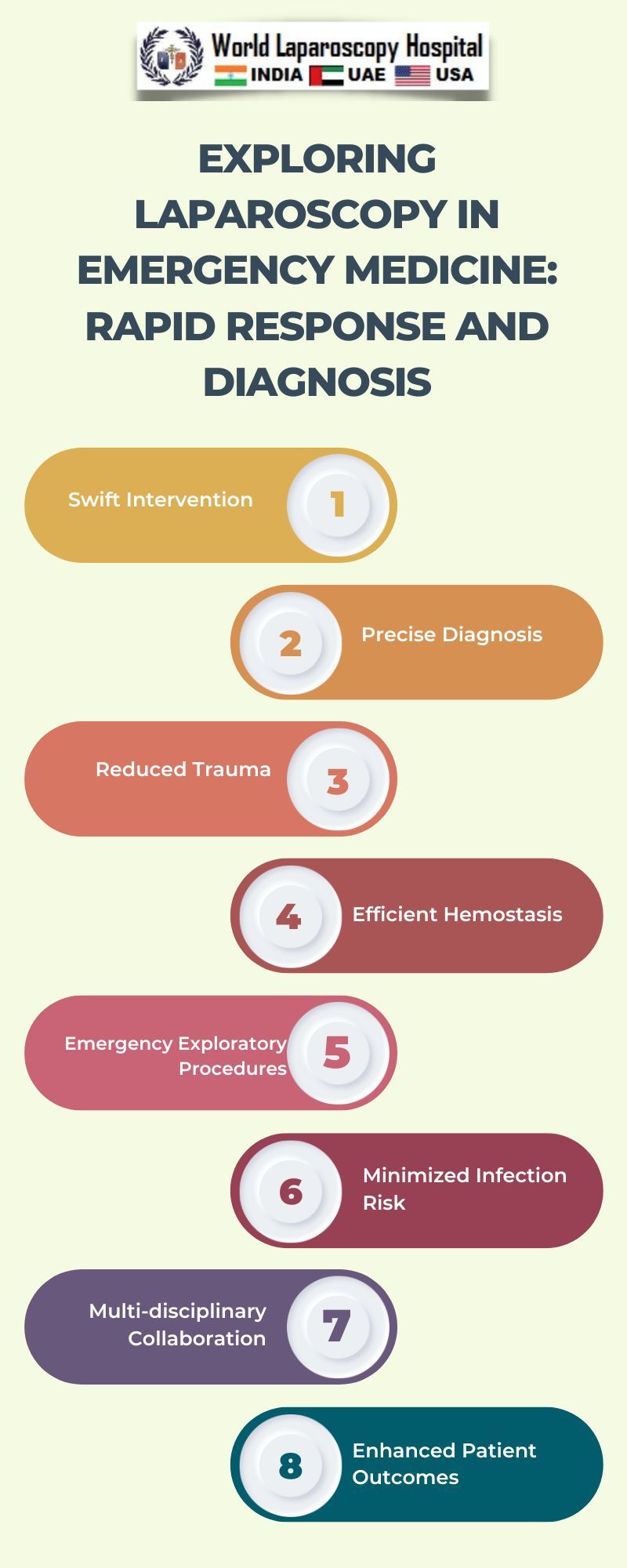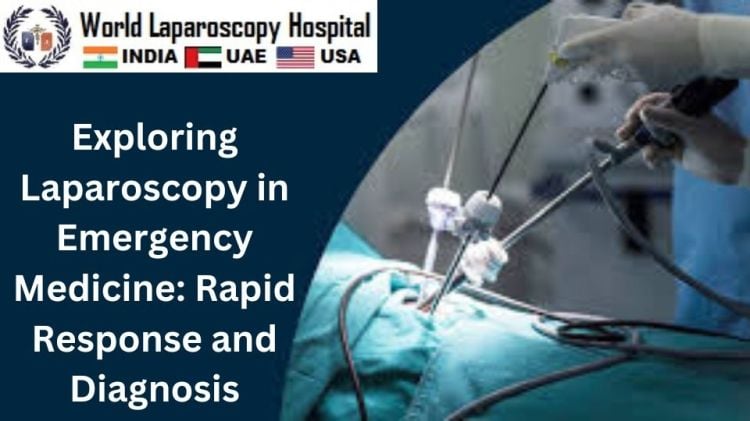Exploring Laparoscopy in Emergency Medicine: Rapid Response and Diagnosis
Introduction:
In the dynamic landscape of emergency medicine, technological advancements continually reshape the way healthcare professionals approach critical cases. One such transformative innovation that has gained prominence is laparoscopy—a minimally invasive surgical technique that offers unparalleled benefits in terms of rapid response and accurate diagnosis. This article delves into the realm of laparoscopy within the context of emergency medicine, exploring its evolution, applications, and the pivotal role it plays in revolutionizing the diagnosis and treatment of acute medical conditions.

Evolution of Laparoscopy in Emergency Medicine
The history of laparoscopy dates back to the early 20th century, but it wasn't until the latter half that its potential in emergency situations began to be fully realized. Initially employed for diagnostic purposes, laparoscopy gradually evolved to encompass therapeutic interventions, setting the stage for its integration into emergency medical practices. As technology advanced, so did the instruments used in laparoscopic procedures, making them more versatile and efficient.
Applications in Emergency Situations
Trauma and Abdominal Emergencies
Laparoscopy has emerged as a game-changer in the management of trauma and abdominal emergencies. In cases of abdominal trauma, quick assessment and intervention are crucial. Laparoscopy allows surgeons to explore the abdominal cavity with minimal invasiveness, enabling them to identify and address injuries promptly. This rapid response not only aids in faster decision-making but also reduces the overall morbidity and recovery time for patients.
Acute Appendicitis
Appendicitis, a common emergency, often requires swift surgical intervention. Laparoscopy, compared to traditional open surgery, offers a less invasive approach for appendectomy. The smaller incisions result in reduced postoperative pain, shorter hospital stays, and quicker recovery times. These advantages are particularly significant in emergency settings where time is of the essence.
Gynecological Emergencies
Gynecological emergencies, such as ectopic pregnancies or ovarian torsion, demand timely and accurate diagnosis and intervention. Laparoscopy provides a clear visualization of the pelvic organs, allowing for precise identification and management of such conditions. The minimally invasive nature of the procedure minimizes the impact on surrounding tissues, facilitating faster recovery for patients.
Diagnostic Accuracy and Precision
Visualization and Illumination
One of the primary strengths of laparoscopy lies in its superior visualization capabilities. High-definition cameras and specialized lighting systems provide surgeons with a clear and magnified view of the operative field. This enhanced visibility translates into improved diagnostic accuracy, enabling clinicians to identify pathology with precision.
Exploratory Potential
Laparoscopy permits thorough exploration of the abdominal cavity, allowing surgeons to inspect organs and tissues that may be challenging to assess through other diagnostic modalities. This comprehensive exploration enhances the diagnostic process, especially in cases where the presentation is ambiguous or when multiple pathologies are suspected.
Challenges and Innovations in Laparoscopic Emergency Medicine
While laparoscopy has revolutionized emergency medicine, it is not without its challenges. Limited tactile feedback, the learning curve for surgeons, and the need for specialized equipment can pose obstacles. However, ongoing research and technological advancements, including robotic-assisted laparoscopy, aim to address these challenges, making the technique more accessible and efficient in emergency settings.
Future Directions and Integration into Emergency Protocols
As laparoscopy continues to prove its efficacy in emergency medicine, there is a growing need for its integration into standardized emergency protocols. Training programs for healthcare professionals should include comprehensive laparoscopic skills to ensure widespread proficiency. Additionally, ongoing research should focus on expanding the applications of laparoscopy in emergent scenarios, further solidifying its role as a cornerstone in acute care.
Conclusion:
In conclusion, the integration of laparoscopy into emergency medicine represents a paradigm shift in the approach to acute medical conditions. The technique's ability to provide rapid responses, accurate diagnoses, and minimally invasive interventions has redefined the standards of care in emergency settings. As technology advances and healthcare professionals continue to refine their skills, laparoscopy is poised to play an even more prominent role in shaping the future of emergency medicine, ultimately enhancing patient outcomes and redefining the boundaries of what can be achieved in critical situations.






